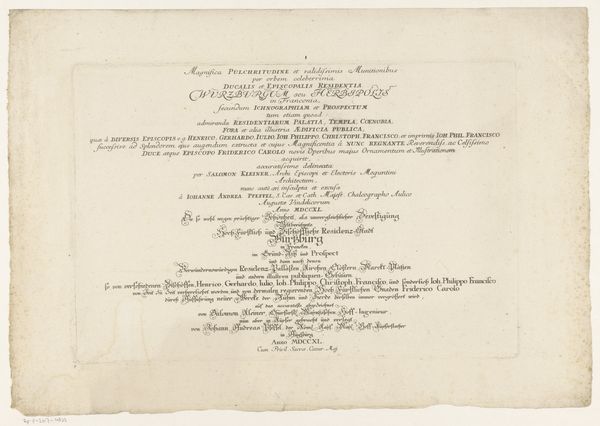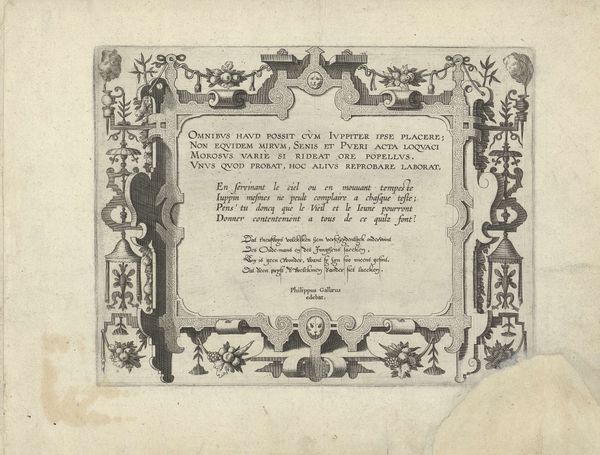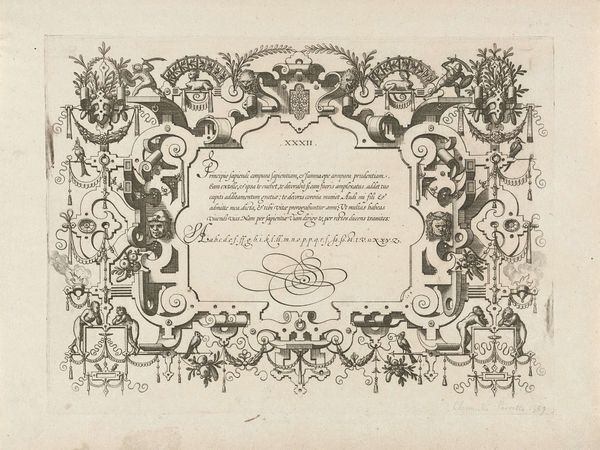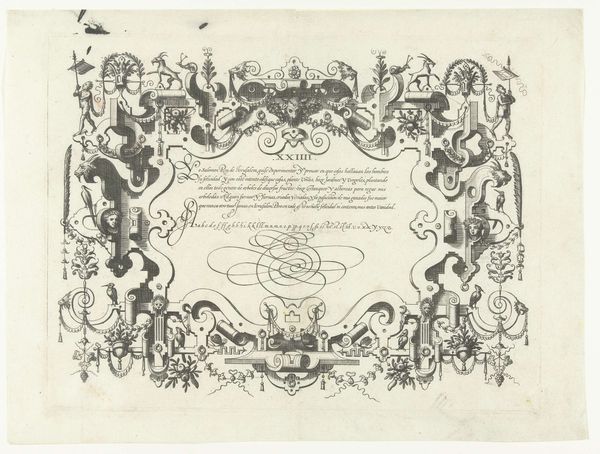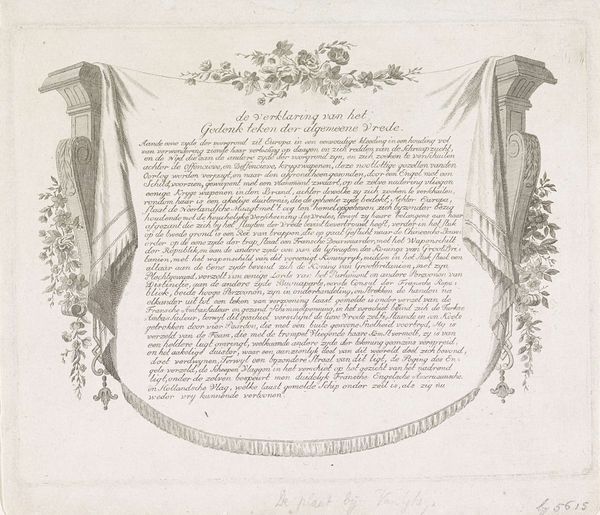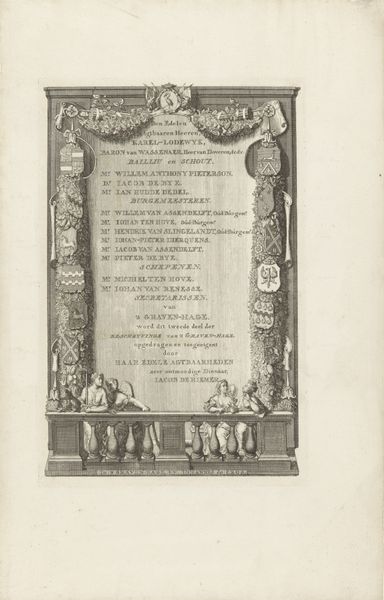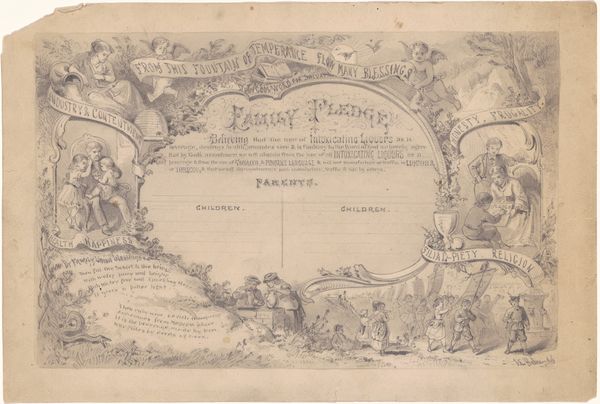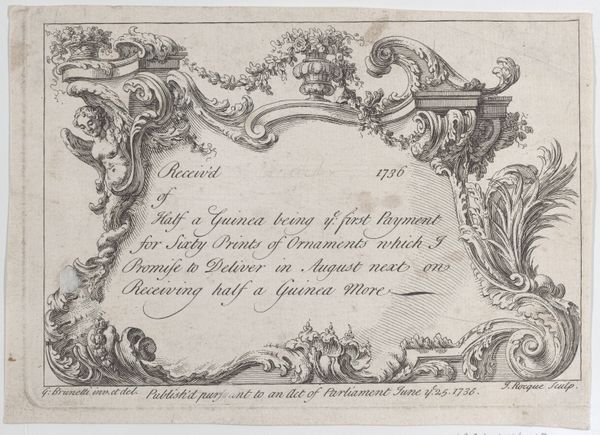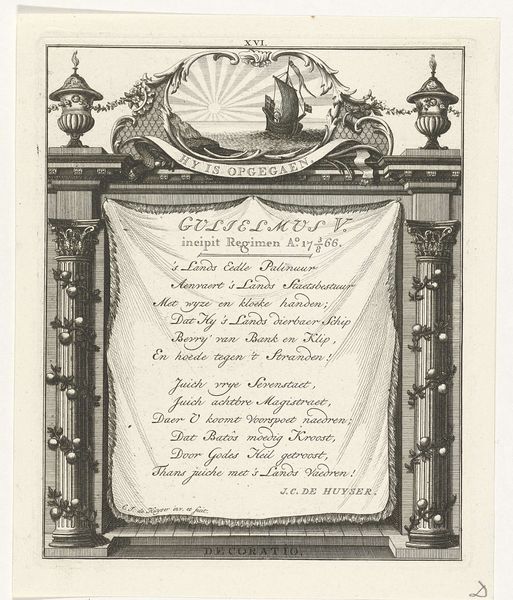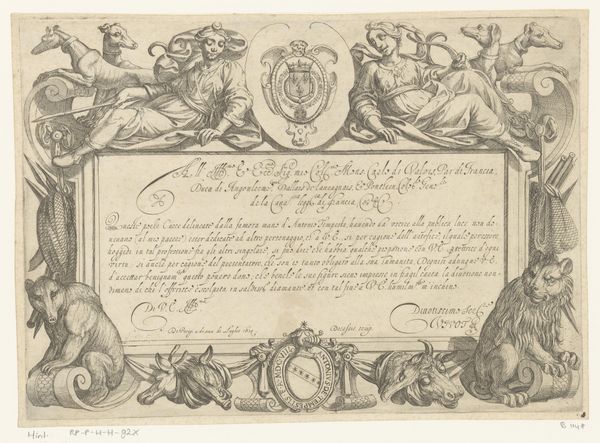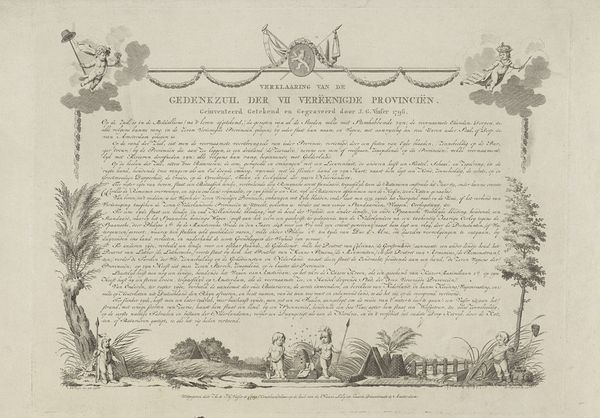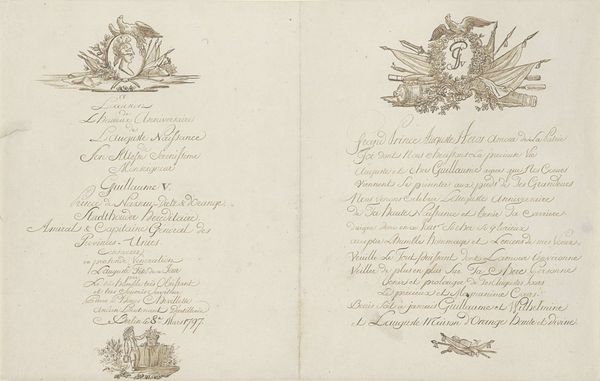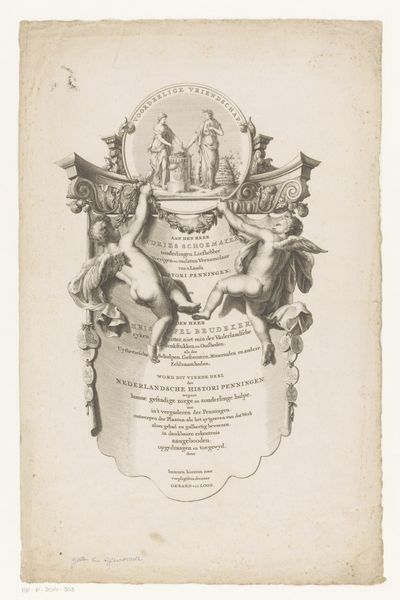
Beginning "Iscrizione nei lati del Ponte di Rimino" ("Inscription on the side of the Rimini Bridge") and followed by an index of plates in the volume. 1743 - 1753
0:00
0:00
drawing, graphic-art, print, etching, engraving
#
drawing
#
graphic-art
# print
#
etching
#
perspective
#
history-painting
#
academic-art
#
engraving
#
calligraphy
Dimensions: Plate: 9 1/4 × 14 7/16 in. (23.5 × 36.7 cm) Sheet: 13 1/16 × 18 13/16 in. (33.1 × 47.8 cm)
Copyright: Public Domain
Editor: So, here we have "Beginning 'Iscrizione nei lati del Ponte di Rimino'" from Giovanni Battista Piranesi, dating from the mid-18th century. It's an etching, with some engraving, presenting inscriptions and an index. There's an interesting tension between the formal presentation of the text and the almost overgrown, decorative elements. What do you see in this piece, beyond its obvious informational purpose? Curator: I see Piranesi grappling with power, really. On one level, he's documenting Roman inscriptions, these pronouncements of imperial authority. But then look closer. These aren't presented as neutral records. Instead, he frames them within this elaborate, almost baroque style, filled with curling foliage, blurring the line between documentation and dramatization. He is actively reframing imperial authority for an 18th century audience. How does that change our perception of ancient Rome, do you think? Editor: I guess it makes it less about cold, hard facts, and more about how those facts are interpreted and presented? It feels less like history and more like… propaganda, almost. Curator: Exactly! And consider who is commissioning and consuming these prints. The rising merchant classes now had access to information and views that once belonged only to nobility. Piranesi understood that this form was ripe for exploring identity and belonging. He provides access to history while simultaneously reminding the viewer of its constructed nature. In effect, Piranesi positions the viewer as active participants in the grand narrative of Rome. Doesn’t it challenge our notion of objective historical representation? Editor: That’s fascinating! I hadn’t considered the agency involved in viewing and interpreting it. It's not just a dry document, but an active statement about power, class, and the way we build historical narratives. Curator: Precisely. Understanding that helps us realize that his work, and by extension, history itself, is never a neutral reflection of the past, but a construction loaded with social and political meaning. Editor: Well, this was certainly a perspective shift! It makes me want to explore more of Piranesi's work, armed with this knowledge of historical and social context. Thanks for your time.
Comments
No comments
Be the first to comment and join the conversation on the ultimate creative platform.
